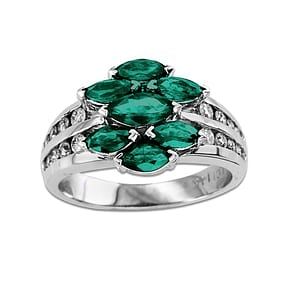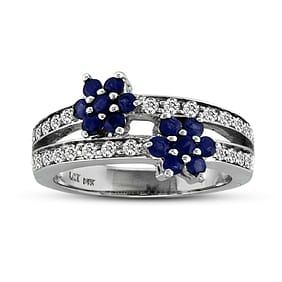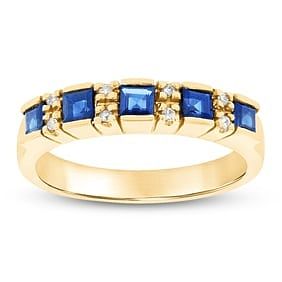Gold Ring w/ Roman Carnelian Intaglio, Maenads & Altar
Lot 58
About Seller
Artemis Fine Arts
686 S Taylor Ave, Ste 106
Louisville, CO 80027
United States
Selling antiquities, ancient and ethnographic art online since 1993, Artemis Gallery specializes in Classical Antiquities (Egyptian, Greek, Roman, Near Eastern), Asian, Pre-Columbian, African / Tribal / Oceanographic art. Our extensive inventory includes pottery, stone, metal, wood, glass and textil...Read more
Estimate:
$3,000 - $4,500
Absentee vs Live bid
Two ways to bid:
- Leave a max absentee bid and the platform will bid on your behalf up to your maximum bid during the live auction.
- Bid live during the auction and your bids will be submitted real-time to the auctioneer.
Bid Increments
| Price | Bid Increment |
|---|---|
| $0 | $25 |
| $300 | $50 |
| $1,000 | $100 |
| $2,000 | $250 |
| $5,000 | $500 |
| $10,000 | $1,000 |
| $20,000 | $2,500 |
| $50,000 | $5,000 |
| $100,000 | $10,000 |
| $200,000 | $20,000 |
About Auction
By Artemis Fine Arts
Jun 27, 2024
Set Reminder
2024-06-27 11:00:00
2024-06-27 11:00:00
America/New_York
Bidsquare
Bidsquare : Connoisseur's Delight Fine Art & Antiquities
https://www.bidsquare.com/auctions/artemis-gallery/connoisseurs-delight-fine-art-antiquities-16181
Classical antiquities, ancient and ethnographic art from cultures encompassing the globe. Artemis Fine Arts info@artemisfinearts.com
Classical antiquities, ancient and ethnographic art from cultures encompassing the globe. Artemis Fine Arts info@artemisfinearts.com
- Lot Description
Roman, Imperial period, ca. 1st to 2nd century CE; Europe, ca. 19th to early 20th century CE. A beautiful carnelian intaglio from ancient Rome depicting the incised image of 2 female figures - likely Bacchantes (Greek Maenads) - at the altar of Bacchus (Greek Dionysus), the Roman god of wine, all set in a 19th to 20th-century gold swivel ring. Each woman is draped in a robe as she holds up an offering and approaches the altar, which depicts the bearded god standing contrapposto and donning a wreath as he holds a thyrsus in one hand. Size: 1" L x 0.8" W (2.5 cm x 2 cm); of intaglio: 0.375" diameter (1 cm); US ring size: 8; gold quality: 75.7% (equivalent to over 18 karats); weight: 2.9 grams
Bacchus was the great Roman god of wine, vegetation, pleasure, and festivity, and was the deity to which the Romans dedicated their festival of drunken revelry known as Bacchanalia. The cult of Bacchus was immensely popular in ancient Rome, and symbols of the god - signifying the freedom created by wine, music, and ecstatic dance - were coveted. In addition to intaglios like this one, imagery of Bacchus was used to decorate mosaics, vessels, sarcophagi, furniture, and all manner of visual culture throughout the Roman Empire. Though a prominent subject in Roman art, he was not always depicted in the same manner. The Romans typically characterized him as an elderly man with a lengthy beard or an attractive, effeminate, long-haired youth. His attributes typically included the thyrsus (a long staff topped with a pinecone), a drinking cup, a leopard or panther skin, and a fruiting vine, and he was usually accompanied by a troop of Satyrs and Maenads.
The ancient women of Bacchus, the maenads, or bacchantes are one of the most prolific groups in surviving religious imagery from antiquity. Artists and sculptors throughout the ages have made them their subjects. These wild women who engaged in uninhibited frenzy were considered a mystery even in the ancient world. For the ancients, the maenads represented the dangers of women left unchaperoned by male authority. Yet for many women, the worship of Bacchus allowed them to experience what life could be like as an unfettered maenad.
Provenance: ex-Dr. Corinne Bronfman estate, Washington D.C., USA, acquired via descent; ex-Marjorie Bronfman collection, Montreal, Canada, acquired prior to 1978; ex-Sotheby's, London, United Kingdom, 4-5 July 1921, "Catalogue of the Story-Maskelyne Collection of Ancient Gems, the Property of W.E. Arnold Forster, Esq., lot 147; ex-William Arnold-Forster (1886-1951), Cornwall and London, United Kingdom; ex-M.H. Story Maskelyne (1823-1911), Wroughton, Wiltshire, United Kingdom
All items legal to buy/sell under U.S. Statute covering cultural patrimony Code 2600, CHAPTER 14, and are guaranteed to be as described or your money back.
A Certificate of Authenticity will accompany all winning bids.
We ship worldwide and handle all shipping in-house for your convenience.
#186564Ancient Roman intaglio set in 19th to early 20th-century gold ring. Some very light nicks to intaglio, but none greatly affecting imagery. A few minor scratches to ring band and setting that are not very noticeable. Otherwise, ring and intaglio are intact, excellent, and wearable. Indecipherable hallmark on ring band opposite intaglio. Great preservation of detail on intaglio.Condition
- Shipping Info
-
All shipping is handled in-house for your convenience. Your invoice from Artemis Gallery will include shipping calculation instructions. If in doubt, please inquire BEFORE bidding for estimated shipping costs for individual items.
-
- Buyer's Premium



 EUR
EUR CAD
CAD AUD
AUD GBP
GBP MXN
MXN HKD
HKD CNY
CNY MYR
MYR SEK
SEK SGD
SGD CHF
CHF THB
THB













